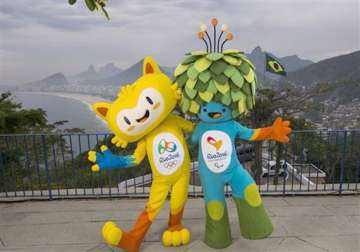Rio de Janeiro: A bright yellow cat-like figure, which also combines elements of monkeys and birds, is the mascot of the 2016 Olympics in Rio de Janeiro.
The smiley-faced mascot represents the animal life of Brazil. The mascot for the Paralympics is a mopped-headed doll with leafy hair, meant to represent the vast diversity of the flora in Brazil.
The mascots made their first official appearance on Monday at a school in the Santa Teresa neighborhood, which is a mix of precarious slums and homes for millionaires. The school is named for former International Olympic Committee President Juan Antonio Samaranch.
"Their purpose is to delight and engage the audience, particularly the children," Carlos Nuzman, head of the Rio organizing committee, said of the mascots. "In addition, the mascots will always be remembered by the people."
A public poll will be conducted to name the two from a shortlist of possibilities. The possibilities for the Olympic mascot are: Oba, Tiba Tuque and Vinicius The choice for the Paralympic mascots are: Eba, Esquindim and Tom. They must be voted on in pairs: Oba and Eba, Tiba Tuque and Esquindim, and Vinicius and Tom.
Votes for the names can be cast on the organizing committee's website and Twitter feed. The winning names will be announced on Dec. 14.
The cuddly, cartoon-like mascots are also big business.
Organizers hope that Olympic merchandise, much of it carrying the mascot logo, will generate sales of 1 billion reals ($400 million). The organizing committee will receive about 15-20 percent of the sales of branded merchandise, with the rest going to licensed manufacturers and vendors.
Income from merchandising makes up a chunk of the $3 billion operating budget. Half of that budget is to come from the sale of local sponsorships.
The Olympic merchandising campaign will comprise about 12,000 products aimed mostly at children. About 90 percent of sales are expected from the domestic market.
"Our mascots represent the diversity of our people, our way of life and our natural environment," said Beth Lula, the organizing committee's brand director.
Olympic officials expect the mascot to represent 25 percent of merchandising sales.
The mascot for this year's World Cup in Brazil -- an armadillo named Fuleco -- generated little interest. Some blamed this on pre-World Cup protests, and repeated delays and distractions in preparing venues.
In addition to the operating budget, Rio is spending about $20 billion in a mix of private and public money to prepare sports venues and urban infrastructure. Brazil spent about $15 billion on the World Cup.
